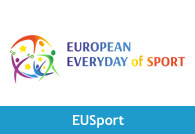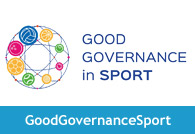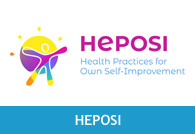NEWS

BSDA is partner in DANCE WITH HEALTH project

05.12.2017
As indicated in the “EU Physical Activity Guidelines”, the human body, as a consequence of regular physical activity, undergoes morphological and functional changes, which can prevent or delay the appearance of certain illnesses and improve our capacity for physical effort. At present there is sufficient evidence to show that those who live a physically active life can gain a number of health benefits, including a lowered risk of certain cancers, such as breast, prostate and colon cancer.
Considering this, and in order to support the implementation of the Guidelines, DANCE WITH HEALTH project wants to promote physical activity in the form of dance to breast cancer survivors and women who are still in treatment aged 30-65 by offering an innovative dance protocol to involve them in a moderate / vigorous physical activity and as a consequence, to make them accept and reconnect with their bodies, build new self-confidence, enhance self-expression, address feelings of isolation, depression, anger and fear and to strengthen personal resources and above all, to do a physical activity necessary for their well being. Thus, the project through the development of its dance protocol aims to promote voluntary activities in sport, together with awareness of the importance of health-enhancing physical activity through increased participation in sport for all.
At an EU level, the need to develop sport for health enhacing and to fighr cancer is seen as a priority, fight against cancer with sport is among the EU's priorities.
On 13 July 2016, the Committee on Environment, Public Health and Food Safety (ENVI) of the European Parliament held a workshop, “The fight against cancer is a team sport: the role of education and sport”. The workshop examined the scientific evidence for the link between physical (in)activity and cancer, different kind of experiences at EU level and the policies in action in this field. The workshop revealed that physical inactivity is the fourth leading risk factor for death globally, responsible for 6% of deaths worldwide and for 5–10% in the WHO European Region1. Recent figures show that in the EU, 6 out of 10 people over 15 years of age never or seldom exercise or do sports, and that more than half never or seldom engage in other kinds of physical activity, such as cycling, dancing or gardening2. Physical inactivity has been estimated to cause 9% of all breast cancer cases and 10% of all colon cancer cases, which has considerable consequences for direct healthcare costs and indirect costs, due to increased periods of sick leave, work disabilities and premature deaths. In recent years, sedentary behavior has emerged more prominently in scientific studies as a potential determinant of cancer risk3. Sports and physical activity have been proven to provide a range of health benefits and to play an important role in primary prevention of various cancers, including colon, endometrial and breast cancer4. Physical activity has also been shown to have positive effects among cancer survivors, as it can decrease the side effects of cancer therapy and treatment, speed up recovery after a cancer diagnosis, improve overall survival rates and provide physiological and psychological benefits5-6-7-8. It is thus important to promote the importance of physical activity and sports in cancer control programmes, and increase public awareness in order to positively influence people’s lifestyle choices and behaviours. For breast cancer, studies point to a risk reduction of about 20%. It has been noted the higher risk reduction associated with recreational activity verses occupational activity, as well as with recent past activity verses distant past. This meant that women who are physically activate in their 40s and 50s benefit more than women who were active in their younger years and that a stronger link is seen for normal weight women compared to overweight women, and post-menopausal women compared to pre-menopausal women.
The importance of sports and physical activity in the prevention of cancer has also been addressed through a range of European and international initiatives that our project has been taken into consideration.
Currently, the Directorate General for Education and Culture of the European Commission (DG EAC) is focusing on initiatives to promote health through physical activity. Firstly, the EC is implementing the Council Recommendation on a European network for the promotion of health-enhancing physical activity (HEPA) 9. Then, the EC is implementing the Recommendations of the High Level Group on Grassroots Sport, set up under the political leadership of Commissioner Navracsics10. These recommendations address the issues fundamental to the contribution of grassroots sport to European societies, such as health, social inclusion, informal learning and skills development, volunteering, sustainable financing, urban planning and infrastructure.
At the international level, the recent physical activity strategy for the WHO Region (2016-2025)11 builds on the commitments of Health 2020 (the WHO European policy framework for health and wellbeing) and aligns with existing WHO frameworks and strategies.
The main applicant and the other participating organisations have already carried out a preliminary needs assessment analysis based on the available literature on dance as a therapy for cancer patients.
Study findings indicate that cancer patients experience elevated levels of psychological distress (Duivenvoorden 1997; Norton 2004; Sellick 1999) and depression (Massie 2004; Parle 1996; Raison 2003) in response to diagnosis and treatment. Therefore, current cancer care increasingly incorporates psychosocial interventions to help patients come to terms with changes in their body, address distorted body images, deal with unresolved grief, restore hope, increase emotional expression, reduce isolation and improve self-esteem. Research results have indicated that such comprehensive care has improved cancer patients’ quality of life (Dibbel-Hope 2000; Mannheim 2006). Creative arts therapies such as dance/movement have been used to aid in the care of cancer patients and in their recovery. The physical benefits of dance therapy as exercise are well documented. Studies have shown that physical activity is known to increase special neurotransmitter substances in the brain (endorphins), which create a state of wellbeing. And total body movement such as dance enhances the functions of other body systems, such as circulatory, respiratory, skeletal, and muscular systems. Today dance/movement therapy is a well recognized form of complementary therapy used in hospitals as well as at the comprehensive clinical cancer centres.
Despite the strategies and initiatives at international and European level, a variety of challenges remain, and all opportunities must be taken to promote physical activities and sports and to support healthy policies in education.
The major barriers to a wide diffusion of a regular physical activity among breast cancer patients are:
Cultural: patients and often those who assist them, are not aware of the collateral damages associated with inactivity and with the disease, once proclaimed, and of how much physical activity can prevent, treat and improve the quality of life.
Psychological: having no knowledge of what above described, patients do not find enough motivation to start their path. During illness, patients often suffer of depression.
Physiological: related to the disease and to its side effects. A vicious cycle gets triggered that amplifies the problems and compromises the patient's quality of life.
To overcome these barriers, and as indicated in the “EU Physical Activity Guidelines Recommended Policy Actions in Support of Health-Enhancing Physical Activity, 2008”, health professionals need to be prepared to give appropriate counselling on physical activity in relation to the specific conditions of the people they see in their practice. Information about the need for physical activity, the best way to introduce it in everyday life and, therefore, changes in lifestyle should be available to all health professionals. It is important therefore that lifestyle counselling and physical activity behaviour change are included in medical education and training.
Considering the needs to encourage breast cancer patients to do physical activity and to train health professionals on how to encourage them, the project objectives are:
to develop and promote an innovative dance protocol for breast cancer survivors and women who are still in treatment aged 30-65 to involve them in a moderate / vigorous phisycal activity and as a consequence, to better their quality of life (in physiological and psychological terms);
to train dance teachers and experts in physical education with specific skills in the participating countries in order to standardize the protocol and make it transferable and replicable also in other contexts and countries. The training will be organized using the train the trainers methodology in order to trigger a cascade effect and involve more operators in the sector.
to organize multipliers events open to the public to inform them about the project and of other topics as the Importance of physical activity for the maintenance of health status; Physical activity in the prevention and treatment of diseases; Dance and its psychological and physiological effects; Breast Cancer and Exercise.
For the participating organisations, DANCE WITH HEALTH project will aim to:
• Encourage participation in sport and physical activity, especially by supporting the implementation of the Council Recommendation on health-enhancing physical activity and being in line with the EU Physical Activity Guidelines;
• Encourage participation in sport and physical activity;
• Promote education in and through sport;
• Reinforce cooperation with partners from other countries
• Increase quality in the preparation, implementation, monitoring and follow-up of EU/international sport projects; increased capacities to encourage citizens to participate in sport and health enhancing physical activity;
• Create a more dynamic, committed and professional environment inside the organisation: ready to integrate good practices and new methods into daily activities; open to synergies with organisations active in different fields or in other socio-economic sectors; promoting the socio-educational development of professionals and volunteers in sport, in line with European policy objectives in the sport field.
At systemic level, the project will expect to contribute to the development of the European dimension in physical activity for all, in line with the general objective of the Programme in the sport field, mainly through the education of health care professionals and through the cooperation with professionals from dance sector. From an individual's perspective, the project will engage cancer patients and will motivate them to perform physical activity changing their lifestyle and to maintain an high adherence to physical activity programs and therefore to increased levels of participation in sport and physical activity.
Project is co-funded by Erasmus Plus Sport Programme of the European Commission.
At an EU level, the need to develop sport for health enhacing and to fighr cancer is seen as a priority, fight against cancer with sport is among the EU's priorities.
On 13 July 2016, the Committee on Environment, Public Health and Food Safety (ENVI) of the European Parliament held a workshop, “The fight against cancer is a team sport: the role of education and sport”. The workshop examined the scientific evidence for the link between physical (in)activity and cancer, different kind of experiences at EU level and the policies in action in this field. The workshop revealed that physical inactivity is the fourth leading risk factor for death globally, responsible for 6% of deaths worldwide and for 5–10% in the WHO European Region1. Recent figures show that in the EU, 6 out of 10 people over 15 years of age never or seldom exercise or do sports, and that more than half never or seldom engage in other kinds of physical activity, such as cycling, dancing or gardening2. Physical inactivity has been estimated to cause 9% of all breast cancer cases and 10% of all colon cancer cases, which has considerable consequences for direct healthcare costs and indirect costs, due to increased periods of sick leave, work disabilities and premature deaths. In recent years, sedentary behavior has emerged more prominently in scientific studies as a potential determinant of cancer risk3. Sports and physical activity have been proven to provide a range of health benefits and to play an important role in primary prevention of various cancers, including colon, endometrial and breast cancer4. Physical activity has also been shown to have positive effects among cancer survivors, as it can decrease the side effects of cancer therapy and treatment, speed up recovery after a cancer diagnosis, improve overall survival rates and provide physiological and psychological benefits5-6-7-8. It is thus important to promote the importance of physical activity and sports in cancer control programmes, and increase public awareness in order to positively influence people’s lifestyle choices and behaviours. For breast cancer, studies point to a risk reduction of about 20%. It has been noted the higher risk reduction associated with recreational activity verses occupational activity, as well as with recent past activity verses distant past. This meant that women who are physically activate in their 40s and 50s benefit more than women who were active in their younger years and that a stronger link is seen for normal weight women compared to overweight women, and post-menopausal women compared to pre-menopausal women.
The importance of sports and physical activity in the prevention of cancer has also been addressed through a range of European and international initiatives that our project has been taken into consideration.
Currently, the Directorate General for Education and Culture of the European Commission (DG EAC) is focusing on initiatives to promote health through physical activity. Firstly, the EC is implementing the Council Recommendation on a European network for the promotion of health-enhancing physical activity (HEPA) 9. Then, the EC is implementing the Recommendations of the High Level Group on Grassroots Sport, set up under the political leadership of Commissioner Navracsics10. These recommendations address the issues fundamental to the contribution of grassroots sport to European societies, such as health, social inclusion, informal learning and skills development, volunteering, sustainable financing, urban planning and infrastructure.
At the international level, the recent physical activity strategy for the WHO Region (2016-2025)11 builds on the commitments of Health 2020 (the WHO European policy framework for health and wellbeing) and aligns with existing WHO frameworks and strategies.
The main applicant and the other participating organisations have already carried out a preliminary needs assessment analysis based on the available literature on dance as a therapy for cancer patients.
Study findings indicate that cancer patients experience elevated levels of psychological distress (Duivenvoorden 1997; Norton 2004; Sellick 1999) and depression (Massie 2004; Parle 1996; Raison 2003) in response to diagnosis and treatment. Therefore, current cancer care increasingly incorporates psychosocial interventions to help patients come to terms with changes in their body, address distorted body images, deal with unresolved grief, restore hope, increase emotional expression, reduce isolation and improve self-esteem. Research results have indicated that such comprehensive care has improved cancer patients’ quality of life (Dibbel-Hope 2000; Mannheim 2006). Creative arts therapies such as dance/movement have been used to aid in the care of cancer patients and in their recovery. The physical benefits of dance therapy as exercise are well documented. Studies have shown that physical activity is known to increase special neurotransmitter substances in the brain (endorphins), which create a state of wellbeing. And total body movement such as dance enhances the functions of other body systems, such as circulatory, respiratory, skeletal, and muscular systems. Today dance/movement therapy is a well recognized form of complementary therapy used in hospitals as well as at the comprehensive clinical cancer centres.
Despite the strategies and initiatives at international and European level, a variety of challenges remain, and all opportunities must be taken to promote physical activities and sports and to support healthy policies in education.
The major barriers to a wide diffusion of a regular physical activity among breast cancer patients are:
Cultural: patients and often those who assist them, are not aware of the collateral damages associated with inactivity and with the disease, once proclaimed, and of how much physical activity can prevent, treat and improve the quality of life.
Psychological: having no knowledge of what above described, patients do not find enough motivation to start their path. During illness, patients often suffer of depression.
Physiological: related to the disease and to its side effects. A vicious cycle gets triggered that amplifies the problems and compromises the patient's quality of life.
To overcome these barriers, and as indicated in the “EU Physical Activity Guidelines Recommended Policy Actions in Support of Health-Enhancing Physical Activity, 2008”, health professionals need to be prepared to give appropriate counselling on physical activity in relation to the specific conditions of the people they see in their practice. Information about the need for physical activity, the best way to introduce it in everyday life and, therefore, changes in lifestyle should be available to all health professionals. It is important therefore that lifestyle counselling and physical activity behaviour change are included in medical education and training.
Considering the needs to encourage breast cancer patients to do physical activity and to train health professionals on how to encourage them, the project objectives are:
to develop and promote an innovative dance protocol for breast cancer survivors and women who are still in treatment aged 30-65 to involve them in a moderate / vigorous phisycal activity and as a consequence, to better their quality of life (in physiological and psychological terms);
to train dance teachers and experts in physical education with specific skills in the participating countries in order to standardize the protocol and make it transferable and replicable also in other contexts and countries. The training will be organized using the train the trainers methodology in order to trigger a cascade effect and involve more operators in the sector.
to organize multipliers events open to the public to inform them about the project and of other topics as the Importance of physical activity for the maintenance of health status; Physical activity in the prevention and treatment of diseases; Dance and its psychological and physiological effects; Breast Cancer and Exercise.
For the participating organisations, DANCE WITH HEALTH project will aim to:
• Encourage participation in sport and physical activity, especially by supporting the implementation of the Council Recommendation on health-enhancing physical activity and being in line with the EU Physical Activity Guidelines;
• Encourage participation in sport and physical activity;
• Promote education in and through sport;
• Reinforce cooperation with partners from other countries
• Increase quality in the preparation, implementation, monitoring and follow-up of EU/international sport projects; increased capacities to encourage citizens to participate in sport and health enhancing physical activity;
• Create a more dynamic, committed and professional environment inside the organisation: ready to integrate good practices and new methods into daily activities; open to synergies with organisations active in different fields or in other socio-economic sectors; promoting the socio-educational development of professionals and volunteers in sport, in line with European policy objectives in the sport field.
At systemic level, the project will expect to contribute to the development of the European dimension in physical activity for all, in line with the general objective of the Programme in the sport field, mainly through the education of health care professionals and through the cooperation with professionals from dance sector. From an individual's perspective, the project will engage cancer patients and will motivate them to perform physical activity changing their lifestyle and to maintain an high adherence to physical activity programs and therefore to increased levels of participation in sport and physical activity.
Project is co-funded by Erasmus Plus Sport Programme of the European Commission.

 Български
Български












































